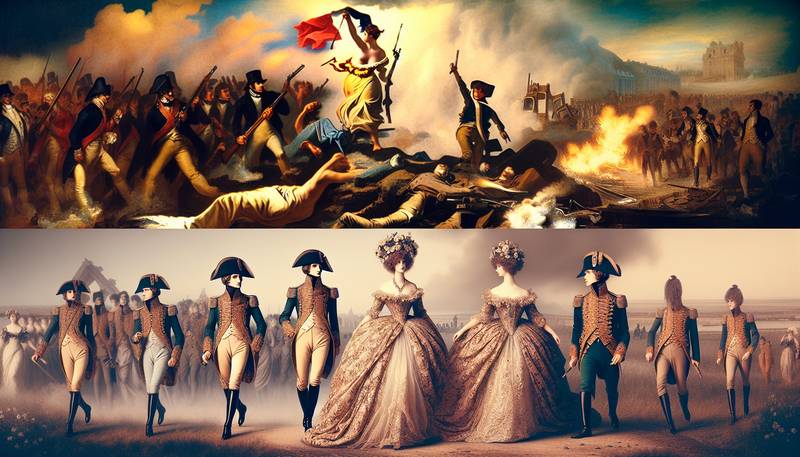Napoleonic Military Influence on 19th Century Fashion

First, A Brief History LessonBefore we dive into the fascinating world of 19th-century fashion, we must first take a brief detour through history. The late 18th and early 19th centuries were a tumultuous time in Europe. With the French Revolution and the rise of its most ambitious son, Napoleon Bonaparte, continental Europe was shaken to its core by war, revolution, and rapid social change.This period of upheaval did not end at the battlefield; it had far-reaching consequences that extended even into the world of fashion. The ornate, extravagant styles of the pre-revolutionary French aristocracy fell out of favor, and military-inspired clothing became the height of fashion.From Battlefield to Ballroom: A Fashion RevolutionThe influence of military fashion on 19th-century civilian clothing was profound and can still be seen in the garments we wear today. Consider the following examples:- The Tailcoat: This distinguished garment, once reserved for the nobility, is now a staple of formal attire for men. The tailcoat was originally designed to be worn by military officers, but soon made its way into the civilian wardrobe. The high collar, epaulets, and double-breasted design are all hallmarks of military uniforms of the time.
- The Redingote: This long, fitted coat was originally a military garment worn by officers. The name is derived from the French "redingotte," which in turn comes from the English "riding coat." As with many military-inspired fashions, the redingote was adopted by civilians and became a popular item of outerwear for both men and women.
- The Pelisse: This was a lightweight, fur-lined coat worn by cavalry officers. The pelisse was designed to provide extra warmth while riding and was often adorned with braiding and other decorative elements. As with the redingote, the pelisse was quickly adopted by civilians and became a fashionable option for ladies' outerwear.
Accessorizing Like a GeneralMilitary-inspired fashion was not limited to clothing; accessories were also heavily influenced by the military aesthetic. Let's take a look at some of the more unique examples:- The Hussar Boot: These tall, leather boots were originally designed for Hungarian cavalrymen, known as hussars. They featured a tassel at the top and a decorative chain or cord running down the side. The hussar boot was quickly adopted by civilians and became a fashionable choice for men's footwear.
- The Shako: This tall, cylindrical hat was worn by infantry soldiers and featured a distinctive visor and plume. The shako was not as popular among civilians as other military-inspired hats like the bicorn and tricorn, but it still made its way into the fashion of the time.
- The Chatelaine: This was a decorative belt worn by women, featuring hooks and chains from which small household items such as scissors, thimbles, and keys could be hung. The chatelaine was inspired by the bandolier, a similar item worn by soldiers to carry ammunition. As with other military-inspired fashions, the chatelaine soon found its way into the civilian wardrobe and became a popular accessory for women.
Military Chic: Why the Obsession?So, why did 19th-century Europeans develop such a fascination with military-inspired fashion? There are several reasons for this trend:
- Political upheaval: The French Revolution and the rise of Napoleon led to the rapid social, political, and economic changes across the continent. Military-inspired clothing was seen as a way to project power and authority during a time of uncertainty.
- Practicality: Many of the military-inspired garments were designed with a practical purpose in mind. The redingote, for example, was a functional item of outerwear, while the chatelaine allowed women to conveniently carry small items. This utilitarian appeal made these garments attractive to a wide range of people.
- Romanticism: The 19th century was the age of romanticism, a cultural movement that idealized the heroic, adventurous, and chivalrous aspects of the past. Military-inspired fashions, with their associations with bravery and honor, fit perfectly into the romantic ideal.
And the Legacy Lives OnWhile the Napoleonic Wars may be long over, the influence of military fashion on civilian clothing is still very much alive today. From the tailcoat to the hussar boot, we can see echoes of 19th-century military design in the clothes we wear and the accessories we use. So, next time you don a tuxedo or slip on a pair of riding boots, take a moment to appreciate the rich, fascinating history behind these garments.
|
|








